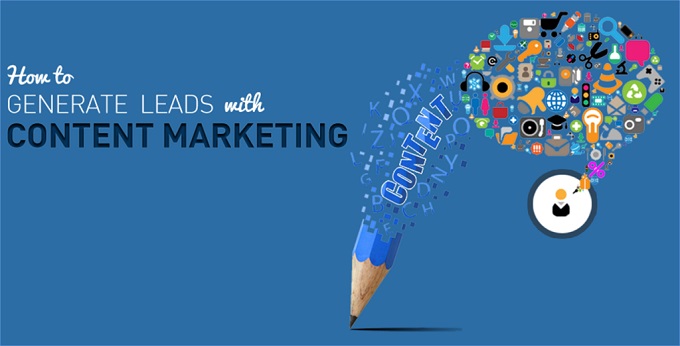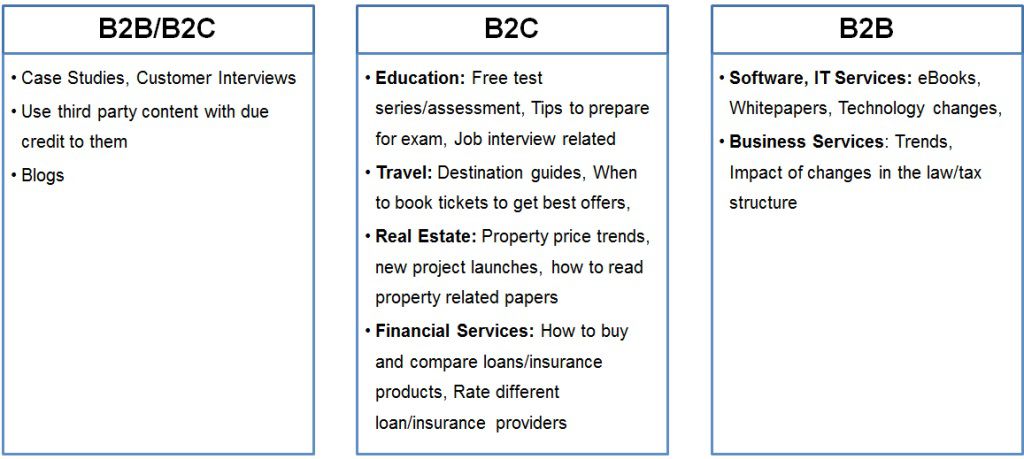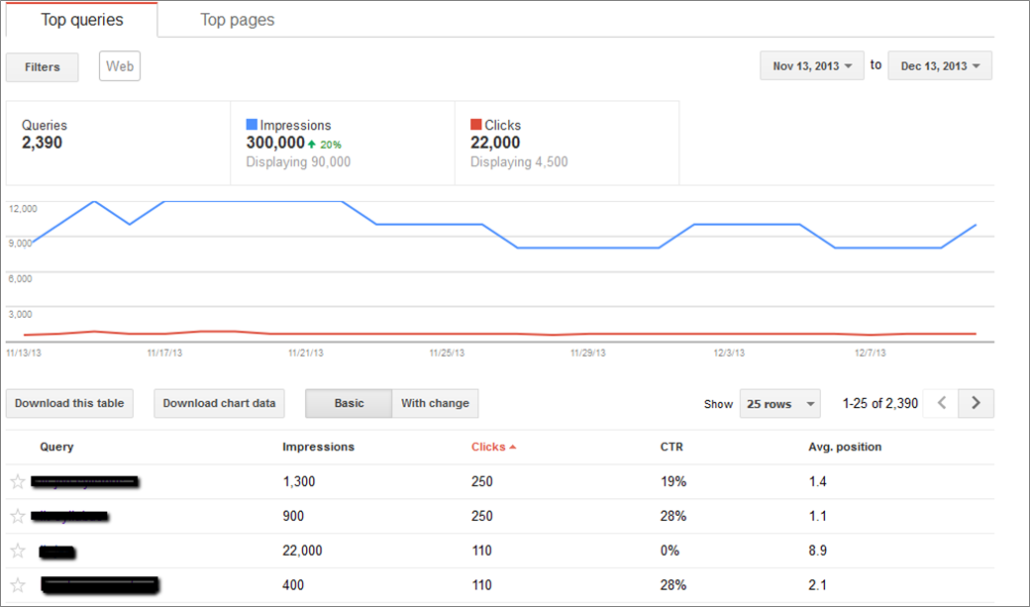
The webinar on ‘How to Generate Leads with Content Marketing’ threw light on interesting areas of content marketing and how you can streamline your content to generate better leads. Those of you who missed it, here’s an opportunity for you to go over some of the questions asked by the attendees during the webinar. Alternatively, you could also watch the webinar on ‘How to Generate Leads with Content Marketing’ here.
Webinar FAQs
Question 1:
Could you give some insights on Email Newsletters and also newsletter designing, frequency of emails to be sent and content decisions?
Newsletter is a communication mechanism where you are sharing information which is of interest to the subscriber and by virtue of doing so you are engaging them with your business. An email newsletter is a regularly distributed publication where the content is of interest to the customers. Take a look at this post for newsletter marketing tips.
You should keep the following factors in mind while designing your newsletter:
- Be consistent with fonts, colour themes and layout
- The design should ensure the email is readable (fewer italics)
- Try to cover fewer topics (two to three)
- Use attractive images/visuals; put Alt Text on images
- Include social share links
- CAN Spam compliance
- Personalise the message body
- Follow subject line best practices
The frequency depends on several factors like the unsubscribe rate, the nature of the business, how your audience takes it and so on. The two factors that hold good for all types of businesses are –
1. Ability to put together the content – If you think it takes too much effort to do it every week then don’t send newsletters every week. Send it every fifteen days or once a month.
2. Interest of your subscribers in receiving your content – If you’re subscribers find it painful to read newsletters every week then avoid it. You will be able to find out this information through your weekly subscriber frequency. If the unsubscribes go up, then you would know that it isn’t working. In some case, your good customers will call you and tell you if your newsletters are too frequent.
In most cases, more frequent newsletters get more unsubscribes. So I’d advise you to come up with an acceptable unsubscribe level, say 0.1 or even lower like 0.001 or 0.002, whatever is relevant depending on the list quality and then decide on the frequency.
In our case, we had a weekly newsletter and people didn’t like it so we stopped that. Now we have a monthly newsletter. For certain geographies, we send out newsletters every 15 days.
Question 2:
I have an ecommerce site. On the home page, should I display content or products?
Since it’s an ecommerce site, I think it depends on the audience. Let’s say the product is a cell phone. In that case, there are basic things visitors would look for in terms of evaluating and comparing phones. You must have relevant content on the site. Reviews are great for ecommerce sites so you should provide that option to your customers, so they post reviews. That would be a great way to build loyalty and trust, which customers would look for.
Question 3:
We are basically a product company. What kind of content should we include in our mails?
The kind of content you should generate depends on the type of business you are into. Take a look at the image below to see what content you could include in your emails.

Let’s take the example of a software product company. In this case, you could talk about how your customers could benefit from your product. Assuming that you sell Project Management Professional (PMP) certification training, you could write about how one can get a better salary by doing PMP certification or any other course that you offer. You could also write content about the experiences of other students who have done their PMP certification from you and the kind of benefits they have received by doing so. Hence, you could talk about the benefit of the product you are selling, which will be accrued by the buyer.
Question 4:
How does content marketing work in email marketing?
Email marketing has a very important role in terms of being a channel to publicize content.
Here is an example – you write a blog or you come up with a nice quiz which is relevant for your audience and you want to publicize that. If you already have subscribers (email subscribers), meaning those people who have already submitted contact information in the past, you can take that piece of content and nurture your leads.
Let’s say you have an education firm or a training firm and you have subscribers. In this case, your subscribers would love to find out how you could help them get a job or receive tips about better job opportunities. If it’s a quiz which could help them get access to a certain piece of information, they would be happy to take a look at it.
So I think email marketing plays an important role in that sense. It does not play a role in cases where mass emails are sent without any consideration or any relevant content for the customer.
Question 5:
My industry changes rapidly. Do you think it is my responsibility to keep old content up to date or is it better to keep it as a “snapshot” of my thoughts at the time?
I’ll explain this with an example. The LeadSquared blog has several posts on Facebook advertising. This includes guides, steps and other posts having snapshots of the process. When Facebook updates these features, content based on that also needs to be changed because otherwise it becomes stale. So in case of the LeadSquared blog, we would look into the pockets where the content has become stale and modify those areas to make it relevant. You need to change and modify your content accordingly because ultimately, if it’s old content, it won’t be searched at all.
So I’d say it’s better to fix it. The other thing you could look at is webmasters and analytics (as shown in the image below), and find out which content is ranking well.

If that content (which is ranking well) is not up to date, then that content needs to be fixed since that is actually attracting traffic. Thus, it is important to have fresh or current stuff there.
You need not change everything since it may still be relevant, but if you are getting good traffic for a particular post, keep it up to date.
Question 6:
What is the ideal content size for a blog?
There are guidelines available online. Obviously it shouldn’t be a few lines and it shouldn’t be a book. It should be enough to give justice to the topic that you have picked for the blog post. Typically, most writers are able to cover the topic in 400-600 words. It shouldn’t be too lengthy because then people won’t read it. If it’s too small, you may miss out on key points. But if you are able to cover all the areas and yet, have a small word count, go ahead. People like Seth Godin write small posts but are able to convey the meaning in totality. Hence, there is no hard and fast rule about content size. As long as it makes sense, it’s good to go.
Question 7:
How can I fix negative reviews?
The way to fix negative reviews is to find out the reason for the negative review and fix that. The other option is to get a good customer to write a positive review about the company against that negative review. You could also take a look at this post, published on Smallbiztechnology.com for more inputs.
Question 8:
What is difference between an Article, a Blog and a Press Release?
Blog is an article, available on the internet that usually expresses the writer’s opinions on a certain topic. An article is similar in nature but may or may not be available online. A press release is an announcement, that is important to the business, made by the company or organization, for the public (customers).
Question 9:
If we want NRIs to look us up for Healthcare tourism in India, what kind of content would be most appealing – factually appealing content or emotionally appealing content?
Before I answer the question, I’d like to add that content marketing is not just about writing stuff. The visual aspect is a very important element in content marketing and one should invest in that too. If you have good images in your blog, it will give you better retention of the traffic on the site. This holds good for any website associated with any kind of business. Presentation is important. Have a nice looking blog that is pleasing to the eye.
Coming back to the question, I’d say facts always help. Emotional appeal is subjective. However, images can play a very important role in that aspect. Your content should be factual. Let’s say you are writing about ‘how healthcare tourism in India is helping people cut costs’. You could highlight the benefits of medical facilities in India such as low waiting periods for transplants and then carry on with your article.
Question 10:
Ours is a 15 -year old real estate agency with a good HNI client base. How frequently should we send emails to our customers and what kind of content should we include?
If you are catering to HNI’s, I think the kind of content they would like to see is how their investments are doing currently. For example, if they have invested in a particular geo and they want information regarding their investments, they would probably want information related to that.
Information on what are the upcoming areas where property prices are going up or going down, what are the risk areas, and so on would be beneficial to them. You could do a comparative study of the same and present that to your customers. You don’t have to prepare the reports yourself. You could pick reports from companies who do that like Jones Lang LaSalle. Obviously, you have to vet it because they are your customers and they would believe what you say.
Share information about how the property market is doing in general. If you have differentiation in types of properties like commercial, residential, office spaces, etc., you could highlight what are the returns on that. You could also talk about percentage benefit in terms of commercial premises versus residential premises and what is the return on investment one can make, and so on.
In terms of frequency, I think monthly mails should work but that’s your call.








